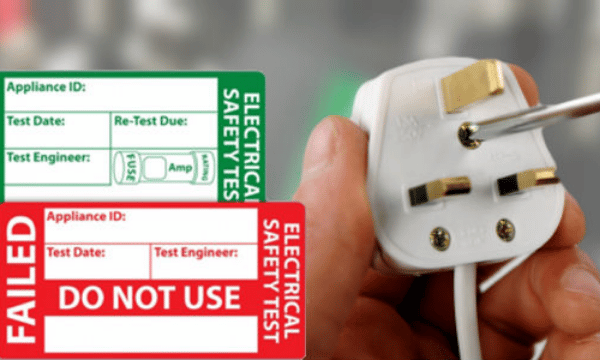Is PAT Testing a Legal Requirement?
“Is PAT Testing a legal requirement?” is probably in the top ten of our most frequently asked questions. In this article, we answer this question and explain how to decide if and when you need to do PAT testing.
PAT testing can be used to demonstrate that an employer is carrying out a preventative maintenance regime on electrical equipment, but it is not a legal requirement. In fact, the HSE themselves reviewed their own PAT testing policy in 2011 and decided that some of their electrical equipment did not need testing at all!

This doesn’t mean you can just cancel all further PAT testing!
You should only do that if you carry out a risk assessment to justify it. You need to look at the type of portable electrical equipment your company uses and understand how it is used and the environment it is used in before deciding upon inspection and testing regimes.
Understanding PAT testing?
Portable appliance testing (PAT) is the term used to describe the examination of electrical appliances and equipment to ensure they are safe to use. A full PAT test should include both a visual inspection and a more in-depth check using specialist PAT testing equipment. This test includes earth continuity, lead polarity, and insulation resistance checks.
The limitation of PAT testing is that it is only valid at the time it is carried out. For example, a power drill could be tested in the morning and in the afternoon an employee takes it out to use, drops and damages it internally. The plug will still have a sticker on it to say that the PAT testing is in date, yet the tool is damaged. If the employee returns the tool and does not tell anyone that it has been damaged, someone else could use a defective piece of equipment. It is therefore important that PAT testing is used as part of a wider inspection and testing and defect reporting regime.
Using PAT testing as part of an inspection and testing plan
There are 3 main criteria which determine the frequency of testing:
- the risk level of the working environment
- the electrical class of the appliance
- the category of the appliance
For example, the HSE reviewed their office PAT testing regime because a lot of their electrical equipment included items such as desktop computers which, although they are class 1, are used in a low-risk environment and are not moved. The conclusion was that these items were low risk, therefore this increases the interval for PAT testing when combined with visual user checks. A wall-mounted television used for displaying information will not require PAT testing at all as it is class 2 (safer than class 1) and is never used.
Conversely, a portable power tool that is used in dusty environments and is regularly transported between construction sites in the back of a van should be PAT tested more regularly, say every six months.
If you have a question or enquiry about health and safety, please call the team on 01452 502113 or complete our enquiry form.
Find this helpful?
Signup to our email notifications to receive alerts when we publish new blogs. We promise not to spam your inbox, you will just get a short snappy intro to Health and Safety articles we think you will love.
"*" indicates required fields

The Ultimate Fire Safety Checklist
If you’ve got a question or query, please contact our super friendly team, they will be delighted to help you!
Simply get in touch via phone or email.

Free
Resources &
Downloads
Informative. Useful. Practical.
Here at Envesca we believe that we are good at giving proactive, sensible and useful advice. Below you will find some free resources that you can download on a host of subjects that will help you and your business.
Training Available
Envesca offer a number of different training courses, which offer advice and guidance on these topics.





